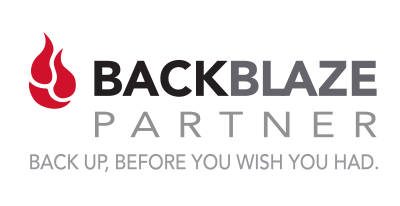
Backup Solutions: 10-Point Checklist for the Modern Team
Organizations of all types and sizes need a reliable and secure backup solution. Whether you have as few as 3 or as many as 300,000 users, your organization’s data is a valuable asset that needs protection.
Having the right strategy and backup solution in place helps ensure that your organization’s data is protected from accident, disaster, or theft. However, choosing the right backup solution can present a difficult challenge. Are external hard drives enough? Or would a cloud-based option be more ideal?
With so many options out there, what are the factors that you and your team should look for when evaluating the backup solutions out there?
We’ve prepared a list of ten things that you need to consider.
1. Easy to deploy to workers’ computers
Whether installed by the user or field technician, implementing the backup solution should have minimal demands on the user or administrator.
2. Fast and unobtrusive client software
Backups should happen in the background by efficient (native) PC and Macintosh software clients that don’t consume valuable processing power or take memory away from applications the user needs.
3. Easy to configure
Backup solutions must be easy to configure for both the user and the IT staff. Out of the box, the default settings should be sufficient for 99%, if not all of users.
4. Defaults to backing up all valuable data
By default, the solution should back up commonly used files and folders or directories, including desktops. Some solutions come across as difficult and intimidate end users because they require a choice of what needs to be backed up, which can result in missing files and folders/directories that contain valuable data.
5. Works automatically in the background
Regardless of where the computer is located, backups should run automatically. End users – especially those that are remote or mobile – shouldn’t be forced to rely on attaching cables or drives, or having to remember to initiate backups. By running automatically, backups will run without requiring either the user or IT administrator having to remember initiating backups.
6. Data restores are fast and easy
Whether it’s a single file, directory, or an entire system that must be restored, users should be able to restore backed up data as quickly as possible. In cases of large restores to end users working in remote locations, the ability to send a restore via physical media is a must.
7. No limitations on data
Throttling, caps, and data limits complicate backups and require guesses on how much storage space will be needed.
8. Safe & Secure
When weighing out your options, you should require that your data is secure during ALL phases of initial upload, storage and restore of data backups.
9. Easy-to-manage
Your solution should provide a clear and simple web management interface for all functions. Opting for an easy-to-use solution results in improved efficiency in both management and operation, with less time required to configure, deploy, and manage.
10. Affordable and transparent pricing
Backup costs should be predictable, understandable and without surprises.
Questions? Comments? Concerns?
We understand that choosing a backup solution can be a difficult undertaking and we’re happy to help navigate that process. Let’s talk.

